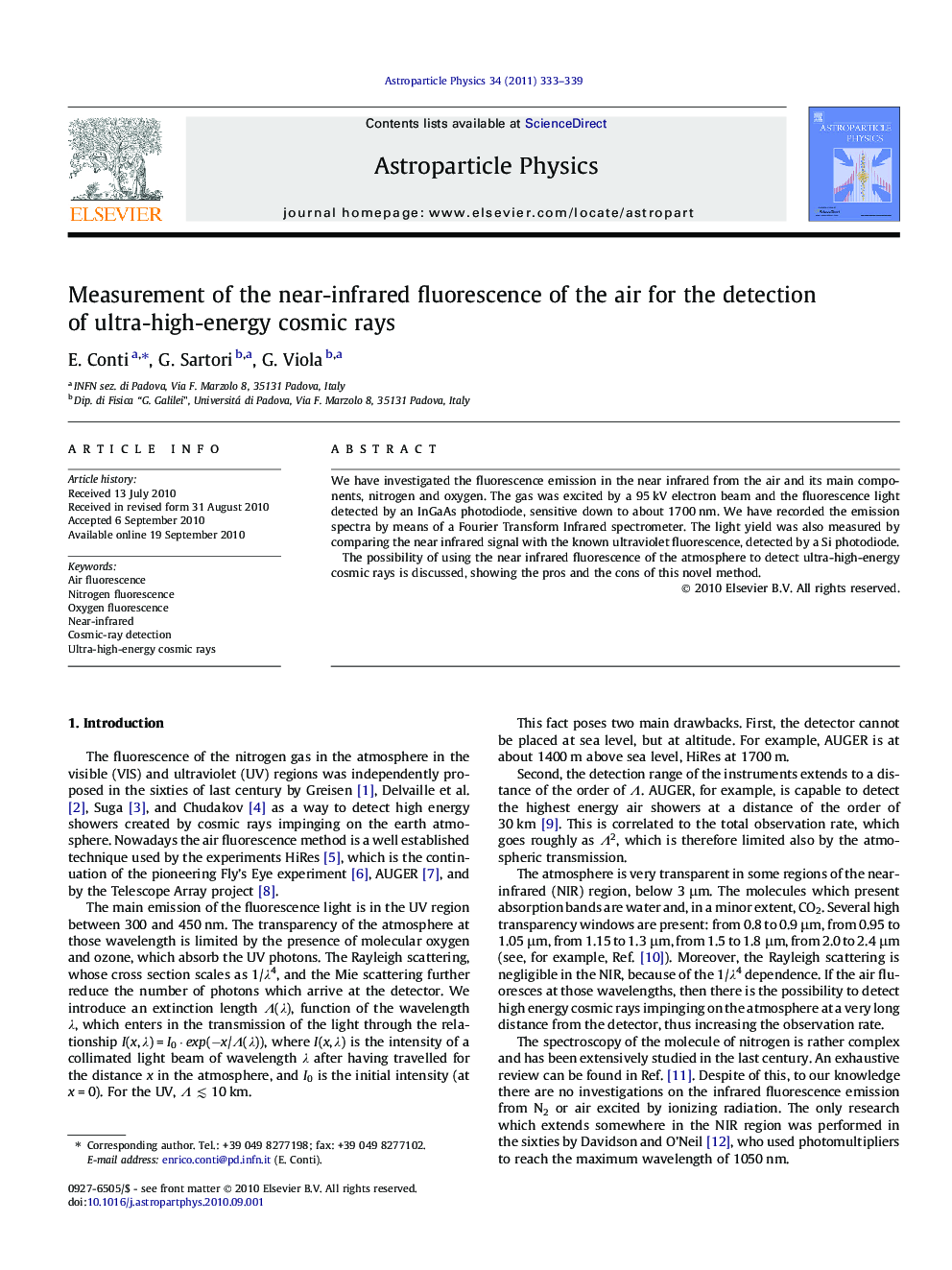| Article ID | Journal | Published Year | Pages | File Type |
|---|---|---|---|---|
| 1771269 | Astroparticle Physics | 2011 | 7 Pages |
We have investigated the fluorescence emission in the near infrared from the air and its main components, nitrogen and oxygen. The gas was excited by a 95 kV electron beam and the fluorescence light detected by an InGaAs photodiode, sensitive down to about 1700 nm. We have recorded the emission spectra by means of a Fourier Transform Infrared spectrometer. The light yield was also measured by comparing the near infrared signal with the known ultraviolet fluorescence, detected by a Si photodiode.The possibility of using the near infrared fluorescence of the atmosphere to detect ultra-high-energy cosmic rays is discussed, showing the pros and the cons of this novel method.
Research highlights► Pure nitrogen near-infrared fluorescence spectrum. ► Pure oxygen near-infrared fluorescence spectrum. ► Dry air near-infrared fluorescence spectrum. ► Dry air near-infrared fluorescence light yield.
